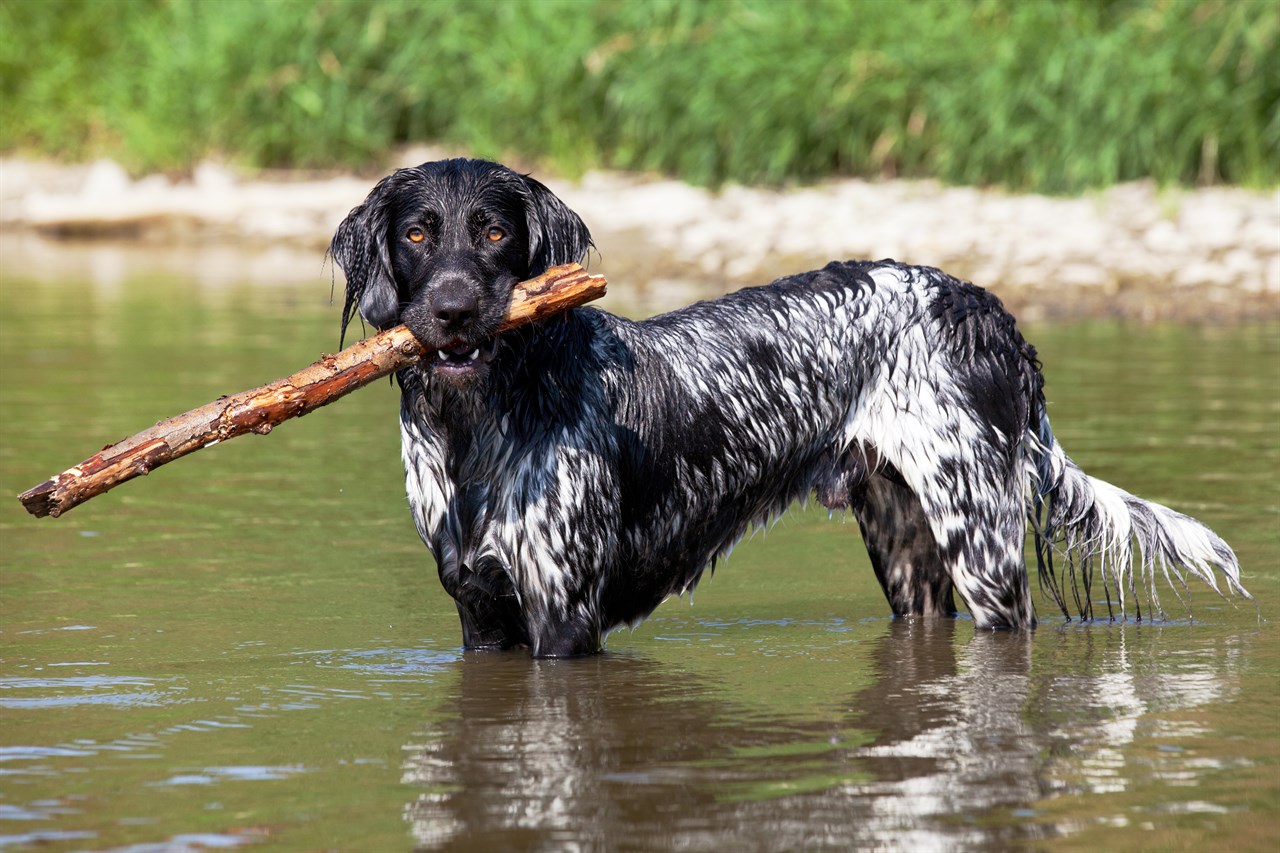Unveiling the Large Munsterlander: A Versatile Sporting Breed

In the vast realm of dog breeds, the Large Munsterlander stands out as a versatile and striking companion. With a rich history, distinctive appearance, and exceptional hunting abilities, this breed has captured the hearts of dog enthusiasts worldwide. In this comprehensive guide, we will delve into the Large Munsterlander's background, defining characteristics, and address some frequently asked questions.
Breed History
The Large Munsterlander, also known as the Großer Münsterländer Vorstehhund, hails from Germany and belongs to the versatile hunting dog group. Its origins can be traced back to the 19th century in the Munster region, located in the northwest of Germany. The breed was initially developed by crossing various hunting dogs, including pointers and spaniels, to create an all-around hunting companion capable of pointing and retrieving game.
Large Munsterlanders were initially bred for bird hunting, particularly in marshy areas where waterfowl hunting was prevalent. Over the years, these dogs gained recognition for their exceptional skills in the field, and breed enthusiasts refined their characteristics. The breed's standard was officially recognised in 1919 by the German breed club, solidifying its place in the hunting dog world.
Also Known As
The Large Munsterlander is also known as the Großer Münsterländer by lovers of the breed.
Breed Group and Purpose
The Large Munsterlander is classified as a member of the sporting group, a category of breeds prised for their hunting abilities and versatile nature. Sporting dogs are known for their keen sense of smell, agility, and adaptability in various hunting scenarios.
The primary purpose of the Large Munsterlander is to assist hunters in locating and retrieving game birds. This breed is particularly skilled at pointing, which means they freeze and "point" in the direction of hidden game birds. Additionally, they excel in retrieving both on land and in water, making them invaluable companions for hunters pursuing waterfowl.
Breed Size
As the name suggests, the Large Munsterlander is a substantial breed in terms of size. Adult males typically stand between 61 to 66 centimetres at the shoulder, while females are slightly smaller, ranging from 58 to 64 centimetres. In terms of weight, males usually weigh between 25 to 32 kilogrammes, and females weigh slightly less, ranging from 23 to 29 kilogrammes .
Breed Coat, Colour, and Appearance
The Large Munsterlander boasts a distinctive and attractive coat that is both practical and aesthetically pleasing. Their dense, medium-length coat is water-resistant, providing protection in wet and marshy hunting environments. The coat is typically black and white, with a predominantly black head and body, white legs, chest, and belly. Some individuals may have small white spots on the head or body, but extensive white markings are discouraged in the breed standard.
The breed's head is well-proportioned with a slightly rounded skull, a well-defined stop, and expressive, almond-shaped brown eyes. Their ears are medium-sized, set high and close to the head, and hang flat against the cheeks. Large Munsterlanders have a strong neck, deep chest, and a straight, sturdy back, which contributes to their athleticism and endurance.
Differences Between Large and Small Munsterlander
While both the Large and Small Munsterlander breeds share their origins in the Munster region of Germany and are versatile hunting dogs, there are some key differences between the two.
- Size: The most obvious difference is their size. Large Munsterlanders are notably larger than Small Munsterlanders, as the name implies.
- Colour: Large Munsterlanders predominantly have a black and white coat, whereas Small Munsterlanders usually have a liver and white coat.
- Purpose: While both breeds are hunting dogs, Large Munsterlanders were initially bred for bird hunting, particularly waterfowl. Small Munsterlanders, on the other hand, were originally bred for hunting game such as foxes and hares.
- Recognition: Large Munsterlanders were recognised as a separate breed earlier than Small Munsterlanders, with the former receiving official recognition in 1919 and the latter in 1922.
In summary, the Large Munsterlander is a remarkable breed with a rich history rooted in the German hunting tradition. Its size, coat, and hunting prowess make it an exceptional companion for hunters and outdoor enthusiasts. While it shares its origins with the Small Munsterlander, the Large Munsterlander is distinguished by its size and coat colour. If you're considering a Large Munsterlander or a similar breed, you can expect a loyal, versatile, and loving companion ready to excel in the field or as a cherished family pet.
Continue reading our Large Munsterlander in-depth articles
- Large Munsterlander Temperament and Behaviour
- Large Munsterlander Training and Socialisation
- Large Munsterlander Toilet Training
- Large Munsterlander Barking Habits
- Large Munsterlander Grooming Requirements
- Large Munsterlander Shedding Behaviour
- Large Munsterlander Sleeping Behaviour
- Large Munsterlander Diet and Feeding Requirements
- Large Munsterlander Average Lifespan
- Large Munsterlander Exercise Requirements
- Large Munsterlander Common Health Issues
- Large Munsterlander Suitability Guide
- Large Munsterlander Advantages
- Large Munsterlander Disadvantages
- Large Munsterlander Cost to Buy and Own
- Large Munsterlander Clubs and Links
- Selling Large Munsterlander Puppy Litters and Dogs
- Buying Large Munsterlander Puppies and Dogs
- Large Munsterlander Alternatives
Large Munsterlander puppies for sale
- Find Large Munsterlander puppies for sale in ACT
- Find Large Munsterlander puppies for sale in NSW
- Find Large Munsterlander puppies for sale in NT
- Find Large Munsterlander puppies for sale in QLD
- Find Large Munsterlander puppies for sale in SA
- Find Large Munsterlander puppies for sale in TAS
- Find Large Munsterlander puppies for sale in VIC
- Find Large Munsterlander puppies for sale in WA